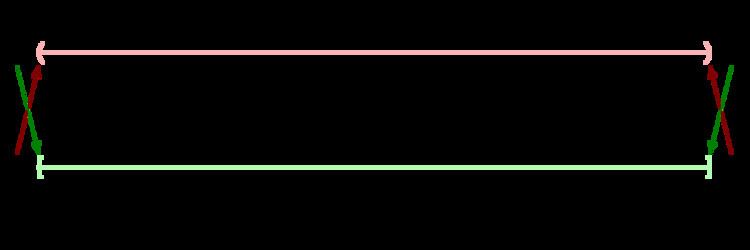 | ||
The Cantor–Bernstein–Schroeder theorem of set theory has a counterpart for measurable spaces, sometimes called the Borel Schroeder–Bernstein theorem, since measurable spaces are also called Borel spaces. This theorem, whose proof is quite easy, is instrumental when proving that two measurable spaces are isomorphic. The general theory of standard Borel spaces contains very strong results about isomorphic measurable spaces, see Kuratowski's theorem. However, (a) the latter theorem is very difficult to prove, (b) the former theorem is satisfactory in many important cases (see Examples), and (c) the former theorem is used in the proof of the latter theorem.
Contents
The theorem
Let
Comments
The phrase "
An isomorphism (between two measurable spaces) is, by definition, a bimeasurable bijection. If it exists, these measurable spaces are called isomorphic.
Proof
First, one constructs a bijection
Example 1
The open interval (0, 1) and the closed interval [0, 1] are evidently non-isomorphic as topological spaces (that is, not homeomorphic). However, they are isomorphic as measurable spaces. Indeed, the closed interval is evidently isomorphic to a shorter closed subinterval of the open interval. Also the open interval is evidently isomorphic to a part of the closed interval (just itself, for instance).
Example 2
The real line
The map
